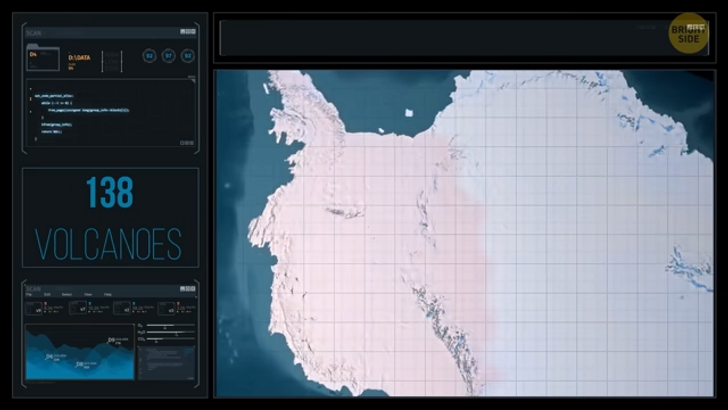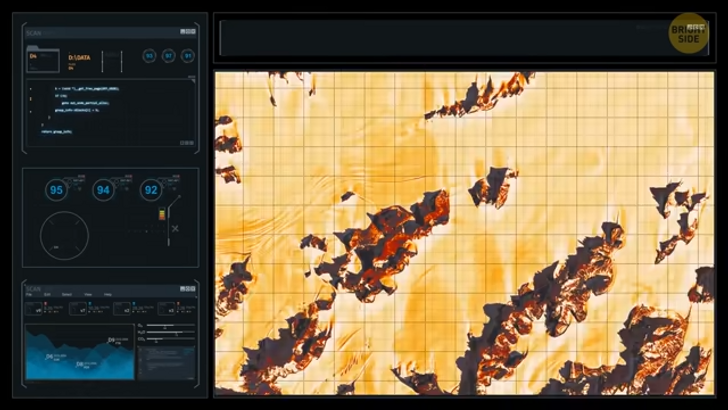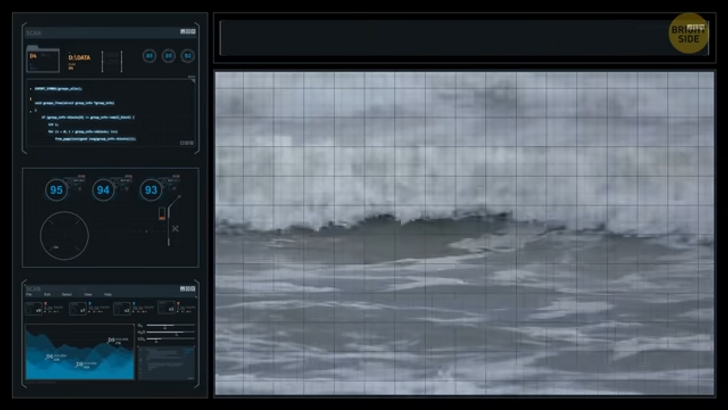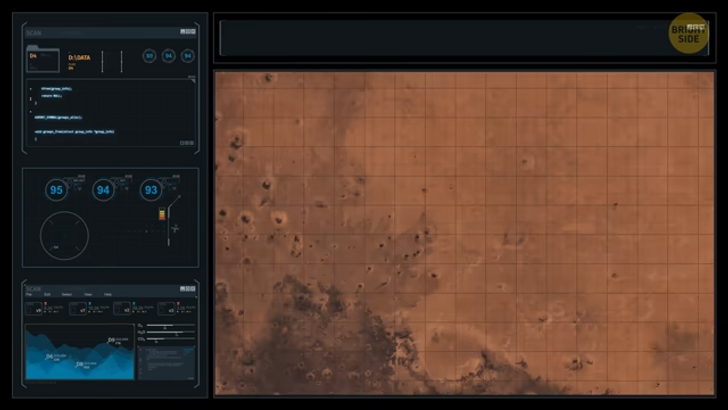10 Dangerous Self-Care Mistakes We Make When Trusting Beauty Bloggers

Do you know that NASA explores not only stars, planets, galaxies, or black holes? Hard to believe, but yes! The agency also works on discoveries here on our home planet Earth. So what has NASA recently discovered? Is there life under the ice?
While they were analyzing data recently, they discovered something unbelievable hiding under Antarctica’s ice! And this discovery not only changes everything we know about the whole water system of the Earth, but it may also help with research about life in space! Humankind’s existence might depend on understanding Antarctica and its secrets! So, the recent discoveries reveal vital information about our survival!

But before we continue, let’s see how much you know about this place where it is only ice as far as your eyes can see. Antarctica is one of the world’s seven continents in the Southern Hemisphere. It is the fifth-largest continent in terms of total area. And that means it is almost twice the size of Australia. Want to see real meteorites? Go to Antarctica!
Due to its dry climate, Antarctica is one of the best places to observe space. But what’s even greater is that you can find meteorites on the white surface of the continent. Scientists have already plucked about 45,000 meteorites from the ice. And they think they can see another 300,000. Since there are not many terrestrial rocks there, it’s easy for them to spot them, thanks to their dark color. Antarctica’s dry desert environment also helps preserve them. Even the ones that fell to Earth more than one million years ago.
And can you imagine any volcanic activity in Antarctica? It’s hard. But this place is where fire meets the ice! West Antarctica is where most volcanic activity occurs. Scientists recently found that 138 volcanoes exist in West Antarctica alone. Wow! You would think that Antarctica is always cold. But no! Its coastal regions can get as warm as 50 degrees Fahrenheit. But have you ever wondered what Antarctica would look like if there were no ice?
It may seem unimaginable now, but it was not always covered by ice. That was 34 million years ago, though. So nobody could tell how the continent’s surface would be without the ice. But NASA changed that. They generated computer simulations and created the most accurate map of it as of today. What they saw was incredible! The continent was not flat at all like it seemed. It’s pretty bumpy with valleys, rolling plains, and high mountains!

But this was nothing next to what they had discovered under Antarctica’s ice! So what is it? Drum roll, please! NASA found two new subglacial lakes! And what’s even cooler about it is that they spotted these lakes from space! How is that? If your answer is “high-tech satellites,” then you are right!
In 2003 NASA launched a satellite called ICESat. It measured ice sheet mass balance and cloud and aerosol heights. The satellite also helped create the ice-free map of Antarctica. In 2010, European Space Agency launched the second satellite — CryoSat-2. It was for tracking the changes in the thickness of the ice. Then in 2018, NASA launched the third one ICESat-2, a follow-on to the ICESat spacecraft. It measured ice sheet elevation and sea ice thickness. It was NASA’s most advanced Earth-observing laser instrument. It delivered the highest precision data.
And when that was combined with the data from the other satellites, it was possible to spot these two new lakes near a pair of larger ones. But how is it possible that these lakes exist in the first place? The average thickness of most Antarctica ice is approximately 1.2 miles. However, it can get over 1.8 miles thick in some places, especially during winter. So, you might think that there is nothing under there.
But science says otherwise! It is not quite possible to see it with your bare eyes, but the continent’s ice is slowly but constantly flowing in different directions under the force of its weight. But scientists could not figure out how water moved for many years. That started to change in 2007 when data gathered from the ICESat provided insight into what hides beneath the surface. They first discovered an entire network of meltwater lakes connected under Antarctica’s fast-flowing ice streams. And there were hundreds of them!

Scripps Institution of Oceanography glaciologist Helen Amanda Fricker figured that the elevation changes measured by ICESat happened because of the dynamics of these lakes. They did not hold meltwater statically. Instead, they were filling and draining continuously over time through a system of waterways. And as they did that, the ice above rose and fell. But where do they drain?
The ocean, of course! And it drains a lot! A recent study co-authored by Fricker found that the drainage of one lake flushed as much as 198 billion gallons into the ocean in only three days. Countless mysteries about how nature works are still waiting to be solved. But finding the two new lakes will give scientists a better picture of how fast the Antarctic ice sheet will change as the climate gets warmer and how this will affect global ocean currents and sea-level rise.
The filling and draining cycle of the lakes also cause the ice sheet to suffer cracks and crevasses. So, the information they find from these new lakes will also give them a better understanding of the damage on the surface of the ice. They will also be able to assess how this filling and draining system influences the speed at which ice slips into the oceans and seas. And that means they can evaluate how the added freshwater may alter marine ecosystems.
This discovery may also suggest whether life is under the ice. Wow! Scientists drilled through about 3,504 feet of ice and found that water samples taken from one of the lakes contained approximately 10,000 bacterial cells per milliliter. Such a high number of bacterial life is a good sign. Because that means the icy waters might also support higher life forms, such as micro-animals. And one of these new lakes might even be their home!

But the most exciting thing is that the new lakes might help them understand whether life on other planets is possible! Scientists believe any life below the frozen surface of the planet Mars might follow the patterns seen in Antarctica’s lakes. So, there is a possibility that they might find critical new information on the type of life that may have existed on the Red Planet.
You wouldn’t want to be there during winter, though. The lowest temperature on Earth you can experience is −128 Fahrenheit. In 2010, there was an even lower temperature of −135 Fahrenheit. And you may feel this cold much worse due to the strong and dry winds. Did you know that the size of the ice surface on Antarctica also changes throughout the year? It is about 1.2 million square miles during summer. But when it’s winter, it grows to 7.3 million square miles.
Yet, despite the change, it remains the largest piece of ice on Earth. Sorry, Arctic, you lose... Do you know these cute little penguins? Consider these animals the locals because there is no native population in Antarctica. It is a no man’s land because no single country owns it. But do you know who really owns it? Five different species of penguins, seals, and killer whales. Haha.
Despite the continent’s harsh conditions, you can visit it as a tourist for fishing and research purposes. Around five thousand people reside on the continent during summer at research stations. But when winter comes, the number naturally drops down to a thousand. Antarctica’s ice blanket makes up 70% of the world’s freshwater reserves. Imagine what would happen if it melted! The global sea levels would be raised by almost 200 feet!











